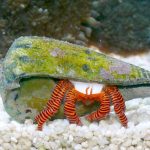Looking for aquarium maintenance in Bolton? We’ve got you covered
Your Aquarium is based in Rossendale, where we offer a first-class fish tank cleaning service that covers much of the surrounding area.
That includes Bolton, where we’re on hand to tackle tanks in Blackrod, Farnworth, Horwich, Kearsley, Little Lever, Turton, Westhoughton, and the rest of the town.
All of our other services are available in Bolton, too, from fish tank management and fully serviced aquariums to same-day water testing, subject to availability.
Outstanding aquarium maintenance across the board
No job is too big or too small, and we cater to fish tanks in homes and businesses alike. We come fully prepared as well, using only the best products and equipment from the top brands.
The result is a fish tank maintenance service that’s second to none in Bolton and surrounding areas.























Bolton, Greater Manchester
Bolton is a large town in Greater Manchester in North West England, historically and traditionally a part of Lancashire. A former mill town, Bolton has been a production centre for textiles since Flemish weavers settled in the area in the 14th century, introducing a wool and cotton-weaving tradition. The urbanisation and development of the town largely coincided with the introduction of textile manufacturing during the Industrial Revolution. Bolton was a 19th-century boomtown, and, at its zenith in 1929, its 216 cotton mills and 26 bleaching and dyeing works made it one of the largest and most productive centres of cotton spinning in the world. The British cotton industry declined sharply after the First World War, and, by the 1980s, cotton manufacture had virtually ceased in Bolton.
Close to the West Pennine Moors, Bolton is 10 miles northwest of Manchester and lies between Bury, Blackburn, Chorley, Darwen, and Salford. It’s surrounded by several neighbouring towns and villages that together form the Metropolitan Borough of Bolton, of which Bolton is the administrative centre. Bolton originated as a small settlement in the moorland known as Bolton le Moors. In the English Civil War, the town was a Parliamentarian outpost in a staunchly Royalist region and, as a result, was stormed by 3,000 Royalist troops led by Prince Rupert of the Rhine in 1644. In what became known as the Bolton Massacre, 1,600 residents were killed, and 700 were taken prisoner.
Bolton Wanderers football club play home games at the University of Bolton Stadium, and the WBA World light-welterweight champion Amir Khan was born in the town. Cultural interests include the Octagon Theatre and the Bolton Museum and Art Gallery, as well as one of the earliest public libraries established after the Public Libraries Act 1850.
Bolton is a common Northern English name derived from the Old English for a settlement with a dwelling. The first recorded use of the name, in the form Boelton, dates from 1185 to describe Bolton le Moors, though this may not be in relation to a dwelling. It was recorded as Bothelton in 1212, Botelton in 1257, Boulton in 1288, and Bolton after 1307. Later forms of Botheltun were Bodeltown, Botheltun-le-Moors, Bowelton, Boltune, Bolton-super-Moras, Bolton-in-ye-Moors, and Bolton-le-Moors.
The town’s motto of Supera Moras means “overcome difficulties” and is a pun on the Bolton-super-Moras version of the name meaning, literally, “Bolton on the moors”. The name itself is referred to in the badge of the Bolton Metropolitan Borough Council using a form of visual pun, a rebus, in combining motifs of arrow for ‘bolt’ and heraldic crown for ‘tun’, the term for the central high point of a defensive position that is the etymon of the suffix of Bolton.
Bolton Aquarium

Having first opened its doors to the public in 1941, Bolton Aquarium is now home to more than 70 varieties of fish originating from across the globe. Part of Bolton Museum, Aquarium and Archive, Bolton Aquarium’s extensive fish collection contains a wide range of freshwater fish from as far and wide as Africa, Borneo, Brazil, Burma, Costa Rica, Madagascar, Malaysia, Peru, and Venezuela. Some of the fish you can see at Bolton Aquarium include:

Ornate bichir (Polypterus ornatipinnis)
This strange, snake-like fish comes from the swamps of central Africa, near the Congo River. It belongs to an ancient group, and fish very similar to the ornate bichir were present alongside the dinosaurs.
Red-bellied piranha (Pygocentrus nattereri)
Due to their fierce reputation, the piranhas are one of the most popular exhibits at Bolton Aquarium. According to legend, anyone who enters the water in the Amazon region where these fish are found runs the risk of being devoured in seconds! The truth is less gory, as they eat mostly other fish.
Pygmy glass danio (Danio danionella cf. translucida)
The pygmy glass danio is one of the smallest fish in the world and has attracted much interest from scientists looking to find reliable breeding methods to help medical science.
Recreating a natural environment
All Bolton Aquarium’s fish live in tanks that are kept as close to their natural habitats as possible. For example, their Peruvian fish are kept in tanks that have a similar environment to a small stream in Peru with shallow waters, plants and fallen leaves. Meanwhile, the Indian display has bright lighting with rocks and wood to provide shelter based on images and videos from local experts who live near the rivers.

Bolton Aquarium is also home to Lake Malawi cichlids, also known as mbuna, which means “rockfish” in the language of the Tonga people of Malawi. They spend most of their life within the rocks of the lake and will only swim within a two- or three-metre perimeter of their caves, hiding behind or under the rocks when a potential predator approaches.
Bolton Aquarium has recreated the same rocky environment in which they live. If you stand in front of their tank, you’ll notice how quickly they disappear within the crevices of the rocks. From their point of view, humans appear to represent the same shape as fish-eating birds.
Elsewhere, Bolton Aquarium’s smallest fish in its collection, the pygmy glass danio, originates in Burma and is the world’s third-smallest fish species at just 12 millimetres long.
On the other hand, the largest fish in their collection is the metre-long so-called mother-of-snails catfish from Brazil. He lives in one of the aquarium’s largest tanks, which also displays a variety of other South American fish and recreates the environment of the Amazon River.
Amongst the aquarium’s most popular fish are its fascinating river rays, Potamotrygon henlei. They come from rivers in Brazil, where they inhabit shallow areas.






Bolton Aquarium history
Although now more than 80 years old, Bolton Aquarium’s location and overall layout are much the same as when it first opened. However, approaches to fish care, education, and behind-the-scenes activities are very different now.
Over the course of the last eight decades, Bolton Aquarium’s focus has changed considerably. In the early years, there was a focus on British freshwater fish. At various times in the past, species of reptiles and mammals have also been exhibited.
Today, Bolton Aquarium boasts an amazing, international fish collection and two members of dedicated staff who are always available to answer questions from visitors and researchers alike. The aquarium also has an educational service available for schools.


More from the Your Aquarium Blog
Introducing the Your Aquarium Blog. Updated weekly, we’re committed to bringing you the latest aquarium-focused online content. Read the Your Aquarium blog for the most important fishkeeping news, discoveries, events, and resources. That’s in addition to online guides, aquarium trivia, fish tank maintenance advice, and the hobby’s most exciting product and conservation news.



